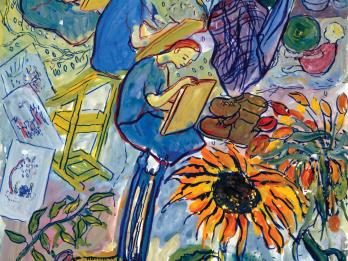‘Ets ḥayim (Tree of Life)
Jacob ḥagiz
1645
The Rambam [Maimonides] wrote: The reason why the laws of women precede the laws of damages1 is in keeping with the order of the verses, as it is stated: If a man sell his daughter as a maidservant (Exodus 21:7) and if men strive together, and hurt a woman with child (Exodus 21:22), and only afterwards: If an ox gore a man (Exodus 21:28). He further wrote that it would have been fitting to start with tractate Ketubot [marriage contracts], but Yevamot comes first, because marriage is something one enters willingly, about which he has a choice, as the court does not compel a man to marry a woman. By contrast, in the case of a yabam,2 the court is required to force him, by saying to him, “perform either ḥalitzah3 or levirate marriage.” It is correct and proper to begin with an indispensable matter before dealing with a topic that is not indispensable. Therefore, he [R. Judah the Prince] started with Yevamot before moving on to Ketubot.
Also, see what is written in the name of Tosafot at the end of tractate Mo‘ed Katan [28b], as he explains that the reason why the order of Nashim begins with Yevamot is because Mo‘ed Katan is at the end of the order of Mo‘ed, and thus one retribution is placed alongside another retribution.4
Tosafot Yom Tov wrote that it is because tractate Yevamot lists those people who are forbidden to the entire congregation of Israel, and it is fitting that this matter should be dealt with before the laws of marriage.
As for why the name of the tractate is in the plural and in the feminine form, this is because there are several types of yevamot, some of which are forbidden on pain of excision, some are regular negative prohibitions, others are positive prohibitions, while yet others are secondary forbidden relations, which are prohibited only by rabbinic law.
Other works by ḥagiz: ‘En Yisrael (1645); Tehilat ḥokhmah (1647); Petil ha-tekhelet (1652); Almenora de la luz (1656); Halakhot ketanot (1704).
Notes
[In the Mishnah, the order of Nashim (Women), comes before the order of Nezikin (Damages).—Trans.]
[The brother of a late husband who died childless, and who is therefore obligated to enter levirate marriage.—Trans.]
[The ceremony whereby the yevamah, the widow of the late, childless brother, is released from her obligation to marry the brother-in-law, the yabam (see Deuteronomy 25:7–10).—Trans.]
[The end of b. Mo‘ed Katan deals with the laws of mourning, and b. Yevamot starts by discussing women whose husbands have died.—Trans.]
Credits
Published in: The Posen Library of Jewish Culture and Civilization, vol. 5.



